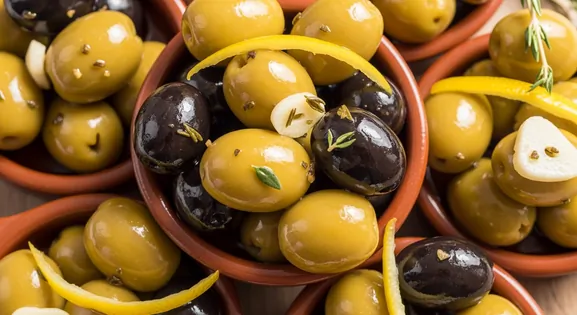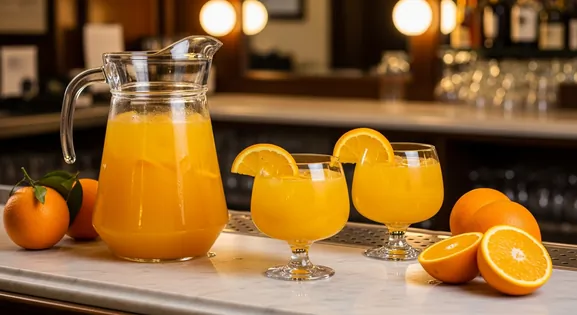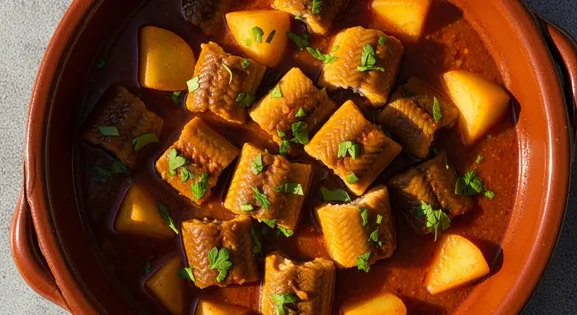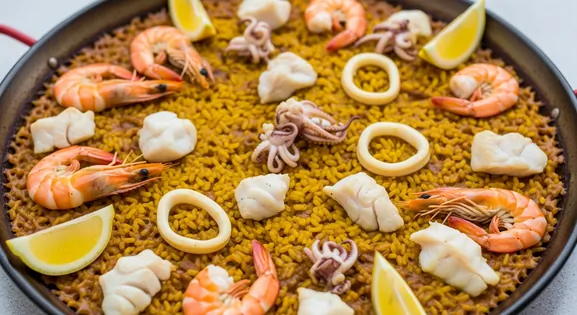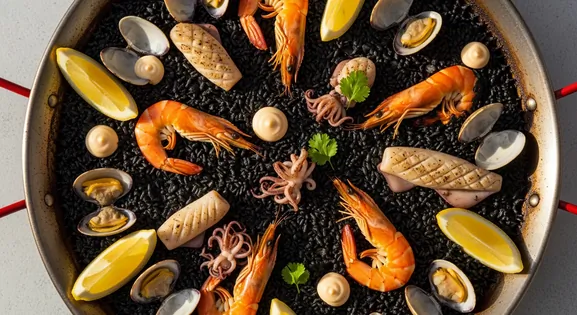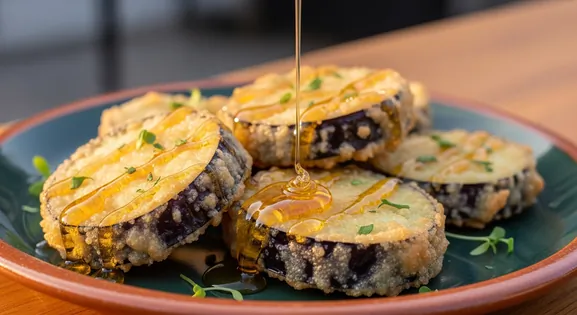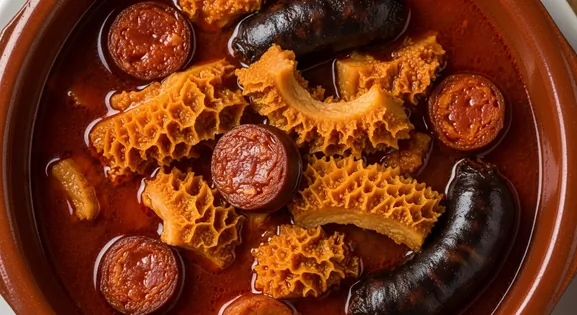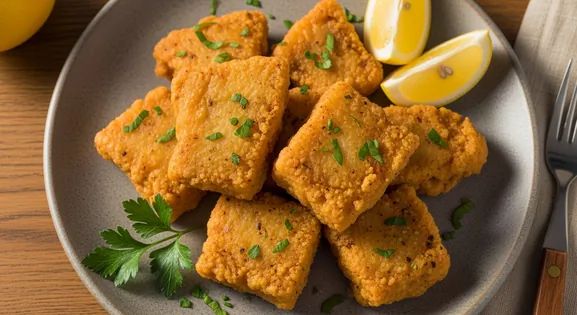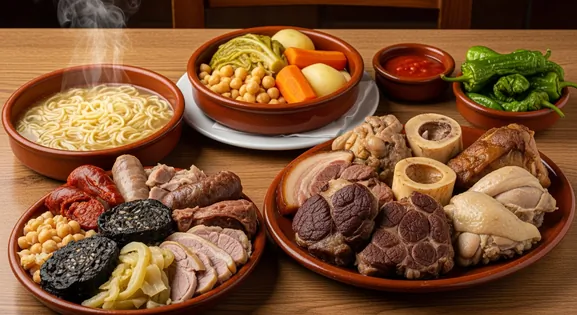Churros in Spain: A Complete Food Lover's Guide
Churros (often 'Churros con Chocolate')
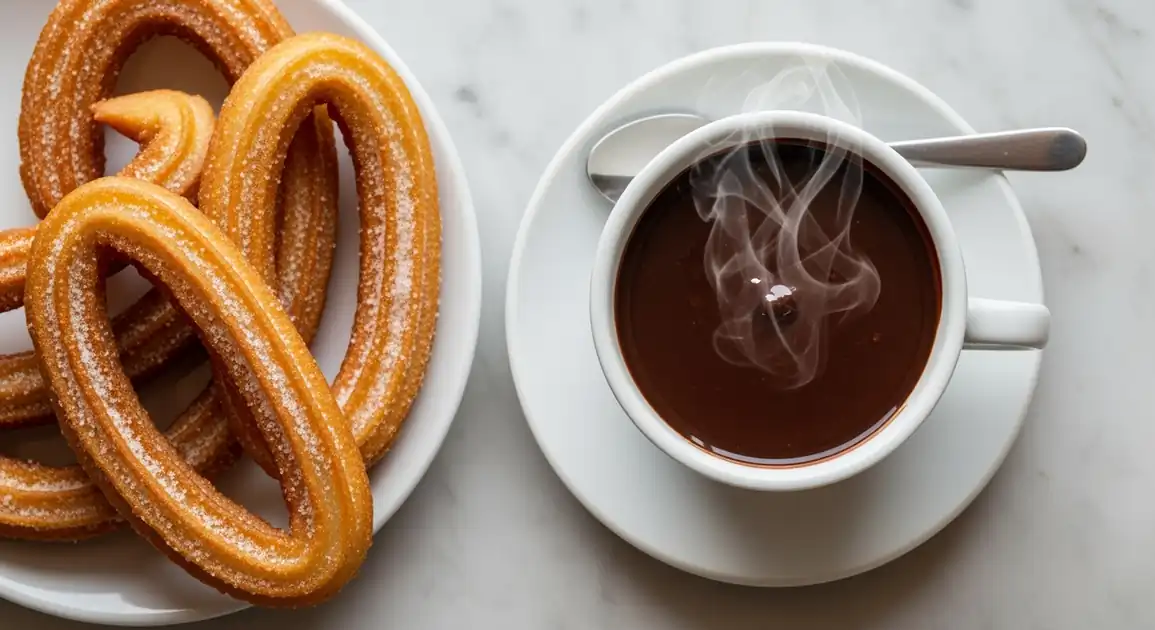
The Basics of Churros
Churros are a beloved Spanish treat, consisting of ridged lengths of deep-fried dough, crispy on the outside and soft inside. Typically made from a simple flour, water, and salt batter extruded through a star-shaped die ('churrera'), they are often enjoyed dusted with sugar and famously paired with a cup of thick, rich hot chocolate ('chocolate espeso') for dipping.
A Traveler's Guide to Authenticity
What to Look For
-
Churros fried fresh to order ('recién hechos')
Ensures maximum crispiness and heat, minimizing time for potential contamination and ensuring the best quality.
-
Hot, clean-looking frying oil
Indicates proper frying temperature and regular oil changes, leading to better taste and safety. Avoid dark, smoky, or debris-filled oil.
-
Thick, steaming hot chocolate
The chocolate should be served very hot, indicating freshness and safety. Thick consistency is traditional and coats better.
-
Clean preparation area and serving utensils
Observe the general hygiene of the establishment ('chocolatería' or vendor cart), including counters, 'churrera', and tongs.
-
High customer turnover, especially locals
Popular places usually guarantee fresher batches due to constant demand.
What to avoid
-
Pre-made churros sitting cold or under heat lamps
Churros lose their crispiness quickly and become greasy or stale. Insist on freshly fried ones.
-
Watery or lukewarm hot chocolate
May indicate lower quality ingredients or improper holding temperature.
-
Excessively greasy churros
Could indicate the oil temperature was too low during frying.
-
Visible cross-contamination (e.g., handling money then food)
Basic hygiene failure that increases risk.
How to Order Churros
Classic Pairings for Churros
Thick Spanish Hot Chocolate
Beverage
The quintessential pairing for churros, this rich, dense, and often bittersweet chocolate is specifically designed for dipping, providing a luxurious contrast to the churros' crispiness.
Coffee (Café con Leche)
Beverage
For those who prefer a less sweet accompaniment, a strong Spanish coffee, particularly a 'café con leche' (coffee with milk), offers a comforting and traditional alternative for breakfast or 'merienda'.
Explore Churros in Detail: City Guides
Discover where to find the best Churros and learn local tips in these cities:
The Story Behind the Dish
The exact origin of churros is debated, with theories linking them to Portuguese sailors bringing back similar concepts from China, or Spanish shepherds creating a simple fried dough treat in the mountains. Their popularity soared in Spain, particularly after the introduction of chocolate from the Americas, leading to the iconic 'churros con chocolate' combination, especially prominent in Madrid since the 19th century.
How It Is Traditionally Made
A basic choux-like pastry dough (without eggs typically) is prepared by mixing flour into boiling salted water. The dough is placed into a 'churrera' (a syringe-like tool with a star-shaped nozzle) and extruded directly into very hot deep oil (usually sunflower or olive oil). They are fried until golden brown and crispy, then removed, drained, and often cut to size. They are typically served immediately, often dusted with sugar.
Key Ingredients of Churros
Wheat Flour
The primary structural component, typically all-purpose wheat flour, which gives churros their characteristic chewiness and crisp exterior when fried.
Quality indicator: Look for flour that is fresh and free from any off-odors, ensuring a neutral base for the churro's flavor.
Water
Used to hydrate the flour and form the dough. The temperature of the water is crucial for creating the right consistency and activating the starch in the flour.
Quality indicator: Clean, filtered water is essential for a pure taste and proper dough consistency.
Frying Oil
Churros are deep-fried, typically in sunflower or olive oil, which contributes to their crispy texture and golden-brown color. The oil must be hot enough to cook them quickly without absorbing too much grease.
Quality indicator: The oil should be clean, clear, and maintained at the correct high temperature to ensure a crisp, non-greasy churro.
Local Churros Variations in Spain
Porras
Thicker, smoother, and sometimes slightly more airy/doughy than churros. Made with a slightly different batter often containing baking soda and leavened.
Churros de Lazo
Churros formed into a loop or teardrop shape before frying.
Churros Rellenos
Filled churros (e.g., with chocolate, dulce de leche, cream). Less traditional in Spain but found in some places, especially tourist areas or modern cafes.
Churros Bañados
Churros coated or drizzled with chocolate or other toppings instead of served with a dipping cup.
Dietary Information
Dietary Information
Important Note for Travelers: Your safety is our priority. Below are the common allergens associated with the traditional preparation of this dish. However, recipes and ingredients can vary significantly between establishments. Always confirm all ingredients directly with the food vendor before ordering, especially if you have a severe allergy.
Potential Allergens
Dietary Suitability
Frequently Asked Questions about Churros
What are Spanish Churros?
Churros are a popular Spanish snack made from a simple dough (flour, water, salt) extruded through a star-shaped nozzle ('churrera') and deep-fried until golden brown and crispy. They are typically ridged, straight or looped, and often served dusted with sugar and accompanied by a cup of thick hot chocolate for dipping.
What do Churros taste like?
Plain churros have a mild, slightly savory taste from the dough and a satisfyingly crispy texture. When dusted with sugar, they become sweet. The main flavor experience often comes from dipping them into the rich, thick, slightly bittersweet Spanish hot chocolate.
Are Churros a low concern from vendors/cafes?
Churros are generally a low concern as they are deep-fried at high temperatures, which ensures quality. Prioritize places that fry churros fresh to order ('recién hechos') in clean-looking oil. The accompanying hot chocolate should also be served steaming hot. Established chocolaterías usually maintain good hygiene standards.
What are 'Porras'?
Porras are a thicker, sometimes doughier relative of churros, made with a slightly different batter (often including baking soda) and fried differently. They have a smoother surface and are often served alongside churros in Spain.
Are Churros vegan or gluten-free?
Traditional churro dough itself (flour, water, salt) is vegan. However, ensure they are fried in vegetable oil and served without non-vegan chocolate (which typically contains milk). They are NOT gluten-free as they are made with wheat flour. Vegan options for chocolate are rare in traditional spots.
How much do Churros cost in Spain?
Prices vary by location and establishment. Expect to pay around €4-€6 for a typical serving ('ración') of churros with chocolate in a chocolatería or cafe in larger cities. Plain churros from a street cart might be cheaper.
Expert How-To Guides about Churros
How to Spot Authentic, High-Quality Churros
Identify the best churros by looking for key quality signs and understanding what makes them truly exceptional.
- Look for 'Recién Hechos': Ensure the churros are fried fresh to order or in very recent batches, not sitting cold.
- Check the Oil: The frying oil should look relatively clean and be hot. Avoid places with very dark or dirty oil.
- Texture Matters: Good churros are crispy on the outside and slightly tender (but not doughy) inside. Avoid overly greasy or soggy churros.
- Chocolate Thickness: Authentic Spanish hot chocolate for dipping should be thick enough to coat the churro, almost like a pudding. Avoid thin, watery chocolate.
- Busy Places: Popular spots, especially with locals, often indicate good quality and freshness (high turnover).
How to Eat Churros Like a Local in Spain
Learn the customs and nuances of enjoying churros in Spain, from ordering to the perfect timing and technique.
- Order 'Churros con Chocolate': This is the classic pairing.
- Dip, Don't Drown: Dip the churro into the thick hot chocolate. It's meant for coating, not soaking.
- Use Your Hands: Churros are typically eaten by hand.
- Drink the Remaining Chocolate: After finishing the churros, it's common to drink the leftover rich chocolate like a beverage.
- Timing: Enjoy them for breakfast (desayuno) or the afternoon snack ('merienda', typically 5 PM - 7 PM), though popular spots serve them late night/early morning too.
Our Commitment to Quality
At Tasteplorers, our mission is to provide the most accurate and useful travel information in the world. To achieve this, all content on this site is created through our unique editorial framework. We utilize leading AI research tools, guided by our proprietary prompts, and a multi-stage validation process. This entire system is overseen by our editorial team to ensure everything we publish meets our high standards for accuracy, cultural nuance, and practical value for travelers.
Learn more about our Editorial Process and our Mission.
Countries
Explore regions
Europe
Discover Europe's diverse culinary landscape, from Mediterranean flavors to hearty Alpine fare. Learn to navigate markets, decode menus, and eat like a local.
Latin America & Caribbean
Discover the vibrant cuisines of Latin America & the Caribbean. Our expert guide covers everything from Mexican street food to Peruvian ceviche and market tips.
Oceania
Explore Oceania's diverse food scene. Learn about Polynesian earth ovens, Fijian feasts, and the vibrant café culture of Australia and New Zealand.
Southeast Asia
Explore Southeast Asia's diverse food cultures from Thailand to Vietnam. Get expert tips on navigating spice levels, choosing quality vendors, and understanding the rich traditions of the region.
